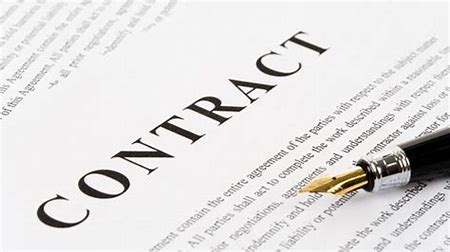In the business world (and elsewhere), disputes happen all the time and for a wide variety of reasons.
Somebody did somebody wrong, and in the commercial contracting world, that means somebody needs to pay.

But, first things, first. Are contract terms clear and unambiguous? If so, you’re off to a good start. But all too often, contract terms aren’t as clearly spelled out as they should be – leaving the door open to one or more of the parties having different views of what the contract requires. This always spells trouble.
Let’s assume you’ve got a binding, enforceable contract (sometimes this is also disputed) and can establish the other party failed to perform their obligations. You’ve made it past the first big hurdles, but then you’ve got to prove what’s often the most important and difficult part of your case – what damages resulted from the breach?
Proving damages is essential otherwise you could walk away the “winner” without having much to show for it – this is true whether the case proceeds to trial or might be resolved in earlier settlement stages. Either way, not a good result. Without convincing, legally-admissible evidence of damages, getting a good result isn’t likely; and if settlement negotiations fail and the matter proceeds to court without sufficient evidence of damages, there won’t be a good result there either. The party who “wins” the case is never the one who’s pounding the table the loudest, it’s always the one who’s best prepared with legally-admissible evidence demonstrating all the important aspects of the case – showing there’s a valid contract, how it was breached and how the non-breaching party was commercially harmed.
After clearing the first big hurdles, you’ve established a clear, enforceable contract and how the other party breached, now comes the hardest part, proving damages, but, of course, the devil is always in the details.
Only after all these elements are met is a party likely to be awarded damages. Proving the damages component of any case is often the most important and difficult part of the case. It might be easy enough to show the other party is the bad guy who breached the contract, but without sufficient reliable evidence showing the damages resulting from the breach, a party might just be the prevailing party “winner in the case”, but not be awarded much. And in most commercial contracts there’s a “prevailing party” provision so the winner can also be awarded their attorney’s fees and costs. A little extra incentive to win, but counter-claims are often raised and there isn’t always a clear winner. The discovery phases of cases and testimony from parties can also raise other tricky issues. And in any formal court proceeding, one thing is certain, it’s going to be long, expensive road to an uncertain result.

Good results come from good preparation. When disputes arise, parties shouldn’t delay contacting legal counsel, who can evaluate claims before long, expensive, contentious proceedings are instituted. The likelihood of recovering damages and what’s required to prove the case must be carefully considered; and then decisions made on the best way to proceed whether through settlement negotiations, mediation or other alternative dispute resolution avenues before lawsuits are filed. Evidence and potential testimony proving the case must be gathered and evaluated – what’s required to prove damages means no speculative or convoluted damages theories, or hearsay, or subjective opinions or guesses, just the plain, hard facts, admissible evidence showing the damages resulting from the breach.
The best contracts clearly spell out all the performance terms, including the all-important who’s required to do what, payment terms, what constitutes a default, how a party might cure a default – along with a lot of other important considerations such as additional damages or remedies a party may be entitled to. Just as importantly, in these situations is that attorneys can often use well-drafted contracts to bolster their client’s position negotiating settlements, often without instituting legal proceedings.
One of the biggest things that gets parties in trouble is “borrowing” provisions from other contracts they’ve used or found online covering only the most basic contract provisions or terms that aren’t really relevant to the transaction. Some of these “form contracts” may sound “legalistically good” to an inexperienced business person. But, all too often in these situations, important provisions are completely left out or are so poorly drafted leaving the door open to a lot of contentious back and forth on what the provisions mean after the contract’s signed. And most commercial transactions have their own blend of unique, important issues that must be carefully considered.
Whether the stakes are high or not, a well-qualified attorney should be called on (preferably before signing on the dotted line) not only for their legal expertise, but also for the practical experience handling the kind of issues involved to advise clients on the best way to proceed when issues arise, including how likely they are to recover damages. I often tell my clients the best contract is the one they’ll never need to call me on after they’ve signed it, because it’s well drafted and the parties fully performed. But things happen, and if problems develop, the starting point is the contract terms. When contracts are well drafted, there’s a lot less fighting over what something meant. When provisions are thoughtfully negotiated and drafted, it makes reaching a fast, effective resolution far more likely (and at far lower cost than the more traditional “fight it out in court” approach) where only one person wearing the black robe will decide the outcome.
Good results come from good preparation and clear contracts. And when disputes arise, we work quickly gathering the best evidence for negotiating fast, effective results; and in many instances formal legal proceedings can be completely avoided – often because the contract’s clear and the evidence trail is good enough and substantial enough to prove our client’s point.